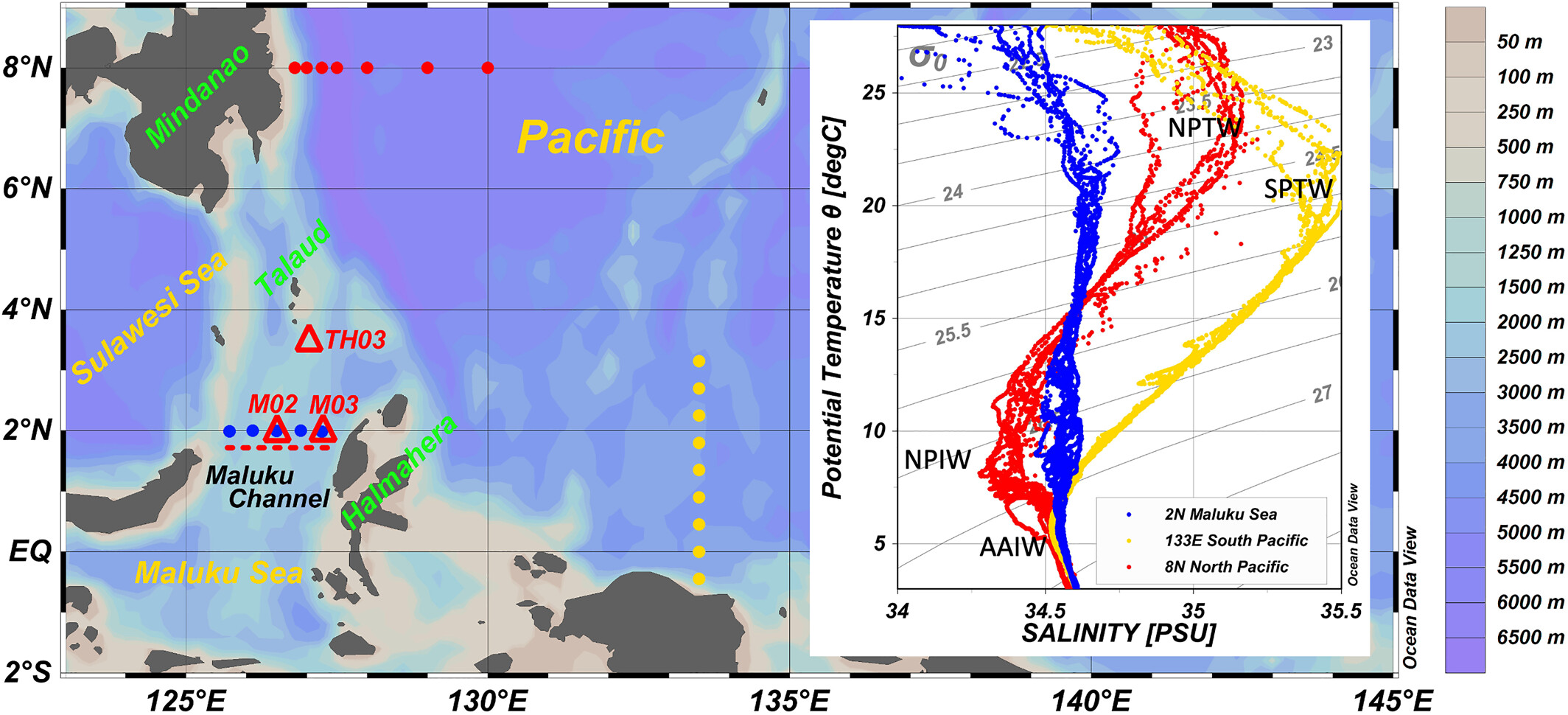Water Mass Variations in the Maluku Channel of the Indonesian Seas During the Winter of 2018–2019
Zheng Wang, Xueli Yin, Xiang Li, Yao Li, Rui Li, Ya Yang, Jane M. Mamuaja, Fransisco Pangalila, Patrice Kalangi, Grevo Gerung, Adi Purwandana, Adhitya Kusuma Wardana, Dewi Surinati, Mochamad Furqon Azis Ismail, Dirham Dirhamsyah, Zainal Arifin, Dongliang Yuan
Published in Journal of Geophysical Research, March 2023
An autonomous underwater glider was deployed in the Maluku Channel during 1 December 2018 through 21 February 2019 to measure temperature and salinity profiles of the upper ∼1,000 m continuously. The measurements suggest intraseasonal variations of the Pacific water mass intrusions into the Maluku Channel, which has not been reported before. The North Pacific Tropical and Intermediate Waters are found to intrude episodically into the eastern Maluku Channel at the depths of 130–180 m and 250–300 m, respectively, during January through February of 2019, each lasting for a few days to a week. The Antarctic Intermediate Water was present in the middle and western Maluku Channel between 600 and 800 m with intraseasonal variability. The South Pacific Subsurface Water was only found to intrude into the eastern Maluku Channel between 250 and 300 m during the first two transections in early December of 2018. Concurrent meter data from three moorings in the Maluku and Talaud-Halmahera Channels are used to verify the water mass movement. The subsurface and intermediate water mass variations here are found to be closely related to the swing of the Mindanao Current near the Maluku Channel. These intraseasonal water mass intrusions are important aspects of water exchange between the western Pacific Ocean and the Indonesian seas.

Fig. Map of the low-latitude western Pacific and Indonesian archipelago with three typical θ-S relationship waters. Red dots along 8°N represent the North Pacific Waters; yellow dots along 133.5°E represent the South Pacific waters; and blue dots along 2°N section represent the Maluku Sea water. Red triangles in the Maluku Sea are the positions of 3 moorings. Red dashed line in the Maluku Channel is the transection that the glider cruises.
Wang, Z., Yin, X., Li, X., Li, Y., Li, R., Yang, Y., et al. (2023). Water mass variations in the Maluku Channel of the Indonesian seas during the winter of 2018–2019. Journal of Geophysical Research: Oceans, 128, e2022JC018731. https://doi.org/10.1029/2022JC018731